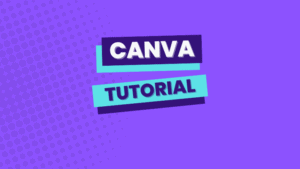If you’re doing any sort of business online, then you likely have some goals for your website… like getting people to opt-in to your email list or buy products and programs directly.
One of the questions I get asked often when it comes to website conversions is “what’s a good conversion rate?”
First, let me define the word conversion since it can be interpreted in many different ways.
A “conversion” happens on a web page when a visitor decides to take the action that you’ve set as the “goal” for that page.
So what’s a ‘good’ conversion rate for your email list or sales pages?
This goal could be to have them opt-in to an email list, fill out a contact form, or purchase a product and check out from an online ordering system.
The conversion rate is the number of people who took action and completed this goal divided by the number of people who visited this page.
For example, if 100 people visit a page and 10 people opt-in to an email list, that would be a 10% conversion rate.
So let’s take a look at what a good conversion rate is, so you can know if your web pages are on track or need some improvement. I’ll share some example conversion rates at the end of this article.
1. What’s A Good Conversion Rate? It Depends On The Traffic
The first thing to note is that it doesn’t matter how amazing your website copy, how flashy your opt-in design, or how amazing your product is…
If the wrong people are visiting your website or landing pages, then they’re not going to convert and take action.
If you’re sending people who are allergic to dairy to a “free ice cream coupon” offer, these people are not going to be jumping on it.
This is important to note, especially if you’re running paid advertising to an opt-in or sales page, because you can’t be sure exactly who is clicking on your ads.
Yes, you’ll do your research and target people according to their interests and how appropriate your information and offer is… but at the end of the day, most of these visitors will be “cold” to you and that means they haven’t built up a lot of trust for you yet.
Contrast that with a slew of traffic and visitors who are coming from a trusted friend or influencer, who is saying good things about you and your website. That increases the trust factor, and conversions, too.
2. A landing page vs. a blog post or regular website page
The next factor that can affect what you should consider being a good website conversion rate, is whether the page you’re sending people to is a landing page or not.
For example, a blog post or regular website might get a conversion rate of 1% because people don’t have the intent to sign up for anything or buy anything. If you’re using something like an exit intent popup, that might go up to 3%, but it’s still relatively low.
There are just too many things on a blog post page to distract from signing up or taking a goal-oriented action. There’s the navigation bar, the sidebar, the footer, and all kinds of links and shiny objects for people to click on.
Contrast that with a stand-alone landing page, with no distractions just an opt-in box or sales button.
I’ve seen these landing pages convert as high as 80%, with the right audience going to them. There is a clear call to action, an enticing reason to act, and nothing to detract from this goal.
If you’re running ads to a sales landing page, you might see your conversion rate go down into the 30% range, that would be considered pretty good.
3. Multiple ways to convert (exit intent popup, click to open popup, direct opt-in)
Different people will notice different things on a web page. Some will opt-in to a box in a sidebar, or an opt-in section at the end of a blog post…
Others will click on an image or button to find out more about a topic they’re interested in, and with a click to open popup – they’ll sign up for an email list right there.
Still, others might be super focused on reading a blog post or watching a video… and decide to leave before signing up for anything. That’s when having an exit-intent popup can be a polite and effective way to increase conversions.
I like using an exit-intent popup on a regular blog site, but also on landing pages… because sometimes the way you phrase your opt-in incentive slightly differently in an exit-intent popup can make all the difference.
Think of this “Wait! Before you go…” popup template from PopupAlly Pro. If you have just the right offer or message, you can capture some of the people who were able to hit their back button.
4. How to increase conversion rates (split testing wildly different options)
I’ve shared a few of the conversion rates that I’ve seen in my own business, and across the bar when speaking to my clients and peers. But the best way to see what a good conversion rate for your particular business and industry is, would be to split test.
You can increase conversion rates by running two different variations of a call to action against each other.
You can run split tests with PopupAlly Pro, by designing two different embedded opt-in offers or two different pop up boxes.
I highly recommend making the two variants as unique as you can. What I mean by that is that changing the color of your “submit button” is not likely to amount to huge differences in conversion rates in the long run.
Instead, you’d want to pit two different lead magnets or opt-in offers. Maybe one is “How to eat more vegetables while you’re traveling” and the other is “The best way to sleep soundly on the road and in the air”. Both are travel related, but the topic is clearly different.
This kind of split test will show you what your visitors are really looking for. You can also create just one opt-in gift, but split test the name and positioning of it. For example, if you’re giving away 12 recipes you might highlight that the recipes are easily made in under 20 minutes.
In your competing variation, you might focus on how these recipes have been passed on by a health guru who lived to be over 100 years old.
The reason I recommend focusing on different calls to action and offers (you can split test price, guarantees, and payment plans for paid offers!) is that these are worth your time.
Just changing the color or size of an opt-in box is not likely to create statistically significant increases in conversions. Instead, your time would be better spent getting more of the right visitors to your site.
5. Keeping the scent from your ad to your page to your opt-in
When talking about how to get a good conversion rate on a page, it’s important to take a step back and look at how someone got to that page in the first place.
If they’re landing with the intent to buy, because they searched on Google for “where to buy XYZ” then it’s easy enough to figure out how to improve conversions. Just make your messaging compelling.
On the other hand, if they came from an ad, clicked a link on another website or in an email… Then you need to make sure that their expectations match what they see when they land on your page.
One of the problems I see with a lot of people who are newer at running ads, is that there’s a mismatch between what the ad says you’ll find on the page… and what people see when they get there.
The key is to make sure that the “scent” of your ad matches what your page offers. For example, if your ad is talking about “how to train your dog in 10 minutes” but the landing page you take them to is all about buying your pet sitting services… you’ve “lost the scent”.
People will just hit the back button. What you promise in your ad or email needs to be quickly found on your page. Similarly, if you’re using any visuals to get people to this page, they need to match up, too.
You wouldn’t want to have a smiling picture of a faerie on your ad, and when people click they see an angry clown… that’s just jarring for no good reason!
Examples of Good Conversion Rates For Opt-Ins
Now that you’ve had a sense of what can impact a site’s conversion rate… let’s take a look at some average conversion rates.
On a website that’s purely informational, with lots of traffic from the search engines on broad topics, you might expect to get 1-2% conversion rates to growing an email list. This is common for most blogs.
On a pure landing page like the 30 Day List Building Challenge opt-in page, we’ve seen it start off at 70% when we were sending our existing audience to sign up… Down to 45% when people are sharing the challenge on social media. And finally, when running ads the average conversion rate drops down to 30-40%.
When it comes to sales pages, a great conversion rate is 1% on the page. If you’re doing a promotion or sending lots of people there with an additional incentive, it can go higher than that.
One more thing to consider when you’re comparing your conversion rates to these examples: you need to have enough volume to get a real sense for the conversion rate average.
For example, if only 5 people visit a page it’s really hard to say whether you’ll get a 100% conversion rate or a 0% conversion rate… which is most likely. They could just be perfectly targeted, or it could be that not enough people have seen your offer yet.
Ideally, I like to get at least 100 conversions when I’m doing a split test to see which one of the two variations is the real winner.
At the end of the day, improving your conversion rate is worthwhile… but only if you’re getting the right people on your email list, who are likely to enjoy what you have to offer and sign up for paid offerings.
What Conversion Rates Are You Seeing?
I’d love to hear if this article was helpful, and whether you’ve had a chance to play with PopupAlly’s new stats tracking and split testing feature yet.
Leave a comment below and let us know!







